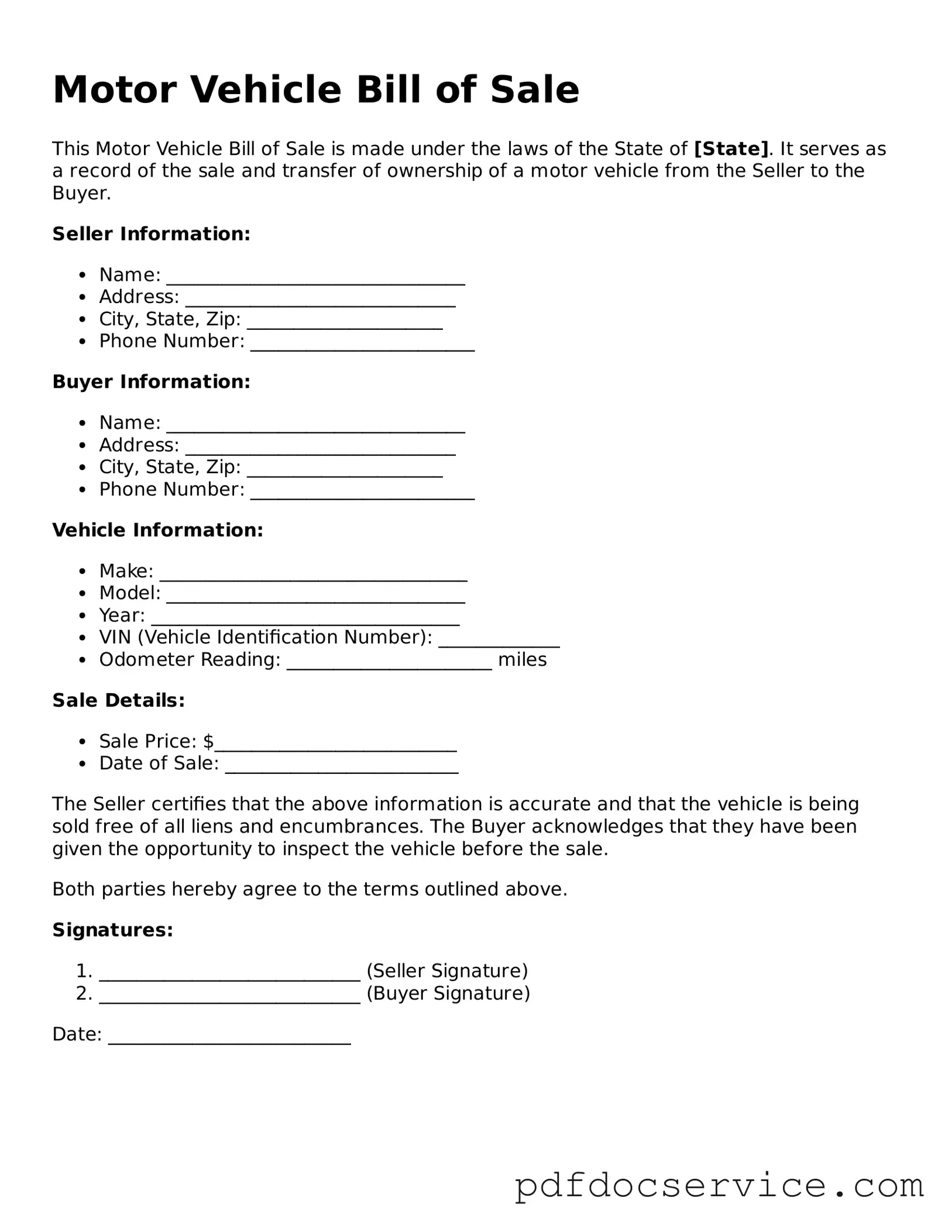The Motor Vehicle Bill of Sale form serves as a crucial document in the transfer of ownership for vehicles, ensuring that both the buyer and seller have a clear record of the transaction. This form typically includes essential details such as the vehicle's make, model, year, and Vehicle Identification Number (VIN), which are vital for identifying the specific automobile being sold. Additionally, it outlines the sale price, the date of the transaction, and the names and addresses of both parties involved. This document not only protects the interests of both the buyer and the seller but also aids in the registration process with the state’s Department of Motor Vehicles. By providing a written record of the sale, it helps prevent disputes that may arise after the transaction is completed. Furthermore, the Motor Vehicle Bill of Sale can include information about any warranties or conditions of the sale, making it a comprehensive tool for anyone involved in buying or selling a vehicle.
